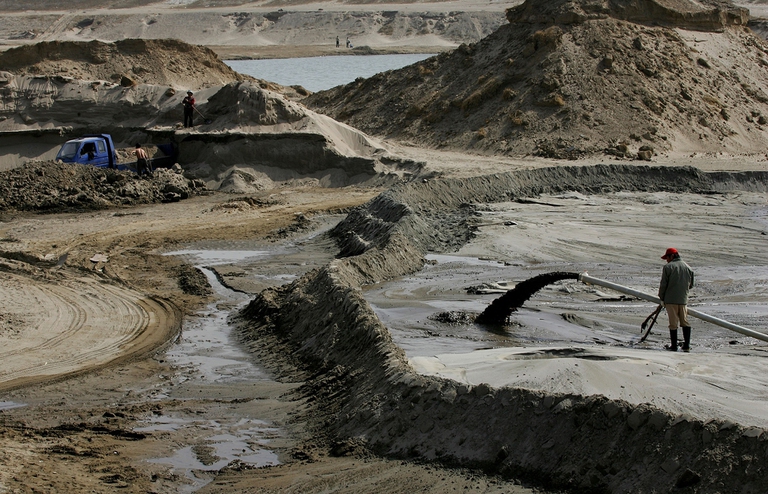https://www.lifegate.it/sabbia-vetro
- |
- After water, sand is the most consumed raw material in the world and there is now less and less of it available.
- Extracting sand from fragile ecosystems causes serious environmental damage.
- Sand mining mafias also operate in countries such as Cambodia, Vietnam, Kenya and Sierra Leone.
- Recycled glass waste replaces sand in new 3D printed concrete.
Our world is made of sand.It can be found practically everywhere.It is the material used in the construction of roads, bridges, trains to high speed, chips silicon and even local regeneration projects.Sand, gravel and rock, crushed together, are fused to form the glass in every window, computer screen and smartphone.
“The consumption of this resource is tripled over the last two decades,” warned the Global Sand Observatory, a body established by the United Nations (UN) which has included the governance of sand resources among one of the major sustainability challenges of the twenty-first century.Due to population growth and infrastructure development, demand will continue to grow.And finding it will be increasingly difficult, especially near urban and industrial centres, due to problems of access and citizens' will.As a result, extraction sites are moving towards more fragile ecosystems such as rivers, coasts and oceans.And this, as demand increases, has a significant environmental impact.

On 25 April the United Nations Environment Program (UNEP) published a new relationship with ten recommendations to avoid a sand shortage crisis.This summary follows a document from three years ago in which the organization states that the issue is often overlooked.The UN estimates that every year they are produced - mainly by China - 4.1 billion tons of cement which makes up 58 percent of today's sand-fueled building boom.If we consider that the global use of sand and gravel is 10 times higher than that of cement, this means that the world consumes approximately dai 40 to 50 billion tons of sand on an annual basis.And this only in the construction sector.
The impacts of extraction and mining mafias
The problems surrounding this resource are widespread and complex to resolve.The sand is extracted by large companies but also by small miners and informal artisans who often work in exploitative conditions and without adequate safety measures.
China and India are at the top of the list of areas where sand mining has a significant environmental impact on people rivers.Banning this activity, however, also means taking away the only source of livelihood from the native communities.“Mining in rivers and beaches has increased pollution and flooding, lowered groundwater levels, harmed marine wildlife, and exacerbated the occurrence and severity of landslides and drought”, said Joyce Msuya, former executive director of UNEP.Furthermore, river damming and excessive extraction reduce the sediment transported to the coasts, reducing deposits at the mouth and eroding beaches more rapidly.
In 2019, UNEP also denounced the growing phenomenon of sand mining mafias, groups composed of builders, traders and businessmen known to operate in countries such as Cambodia, Vietnam, Kenya and Sierra Leone.Activists working to shed light on their shady activities are threatened and even killed.
Replacing sand with glass, the idea from Singapore
The concrete it is a very popular building material and one of its key ingredients is sand.To partially mitigate the problem, researchers at Nanyang Technological University in Singapore have explored the possibility of replacing it with glass waste - which would otherwise end up in landfill - with which to produce 3D printed concrete.
Despite the percentages of recycling of glass are good overall (in Italy it is close to 80 percent), we are still faced with the lack of structures and systems.Or it happens that the fragments are too small to be sorted by color and therefore recycled.So what to do with this non-recycled glass?Scientists propose, in fact, to replace it with sand:after all, it is made of silica which is an important component of it.They then crushed the waste into five sizes (coarse, medium, fine, super fine and “moon dust”) and then combined the ground glass with cement and water.According to the researchers, a further advantage is that it absorbs much less water during processing.
With demand for sand continuing to grow, find solutions circular replacing it would not only reduce the environmental damage caused by the extraction phase, but would allow the recovery of other materials (such as glass) destined for landfill.
